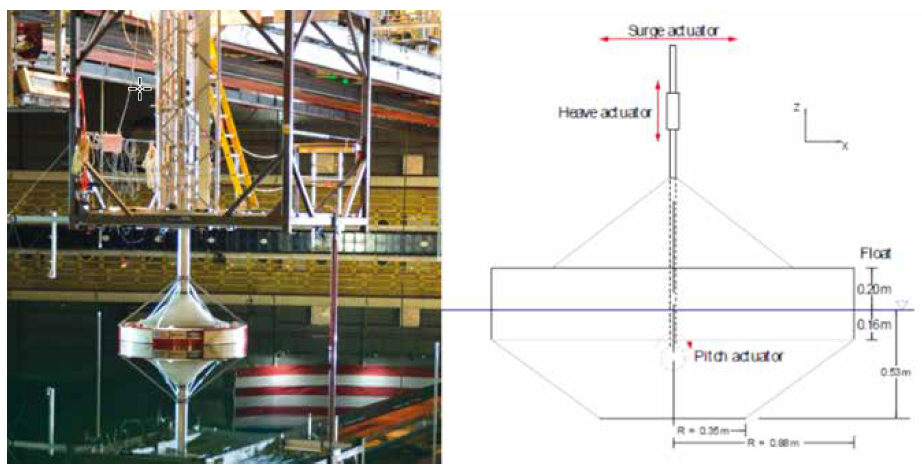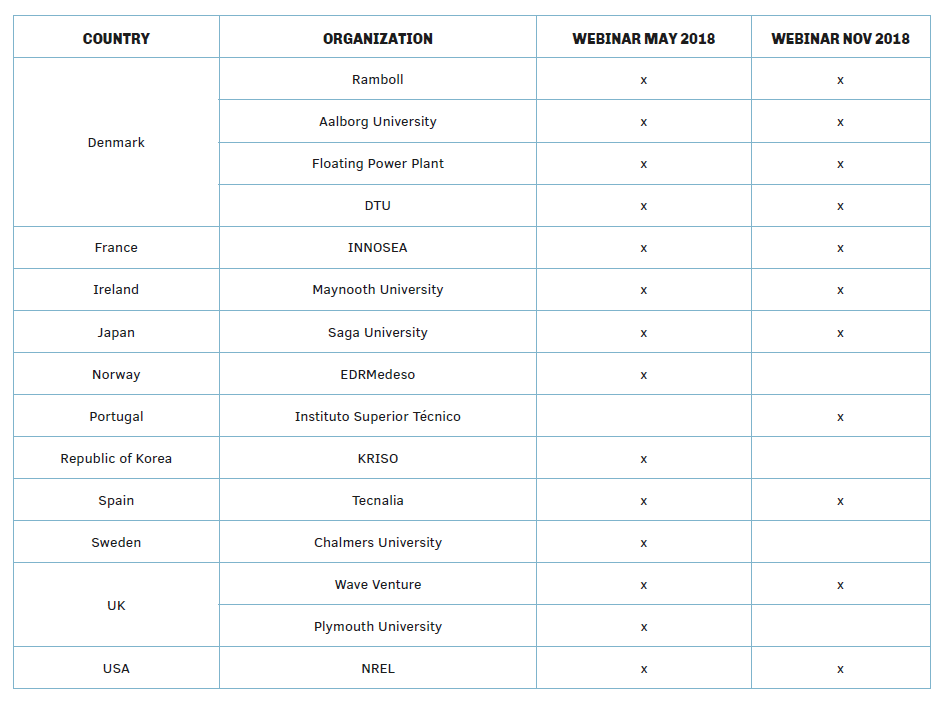Task 10 - Wave Energy Converters - Modelling Verification and Validation
|
OBJECTIVES
|
PROJECT DURATION COORDINATOR
|
ACHIEVEMENTS
The first test case used in this project was a Wave Energy Converter based on a heaving sphere concept. The team involved in this task simulated different numerical experiments, such as heave decay tests and power production calculations in regular and irregular wave cases. The simulation results were discussed and published in the EWTEC publication. The second phase of this work, conducted in 2018, consisted in including experimental test data from a heaving, surface piercing wave energy system that was tested at the US Navy MASK basin in 2016, during a test campaign led by Sandia National Laboratories.

Heaving, surface piercing wave energy concept tested at the US Navy MASK and used as a test case for numerical modelling validation
Numerical modelling studies were done for 4 types of tests (decay test, radiation tests, diffraction tests and regular waves tests). During 2018, two webinars were organised, on 16-05- 2018 and 08-11-2018, to discuss results. The results of the work done were presented at the 3rd International Conference on Renewable Energies Offshore, held on 8-10 October 2018, in Lisbon. The focus of the presentation was on the power performance results from the Sphere as well as comparing simulations to theory. An abstract for a next paper has been submitted to the special edition of the Journal of Marine Science & Engineering.
Countries and institutions present in the webinars on numerical modelling for wave energy (2018):




